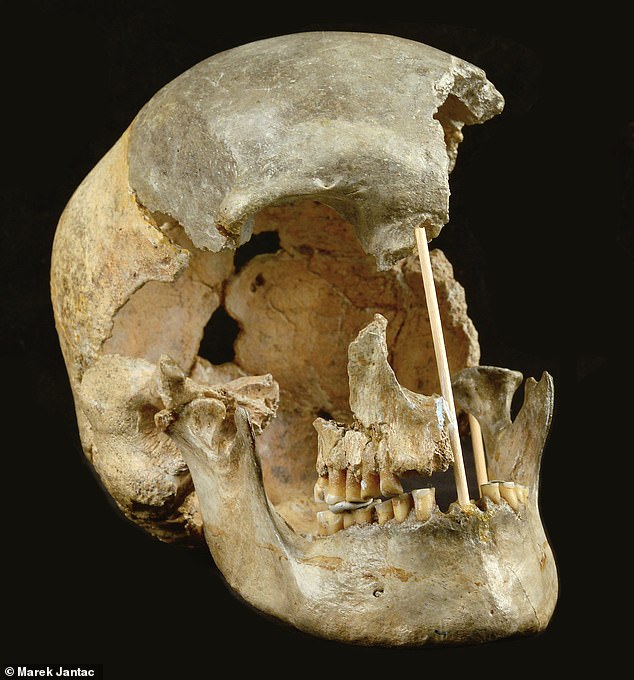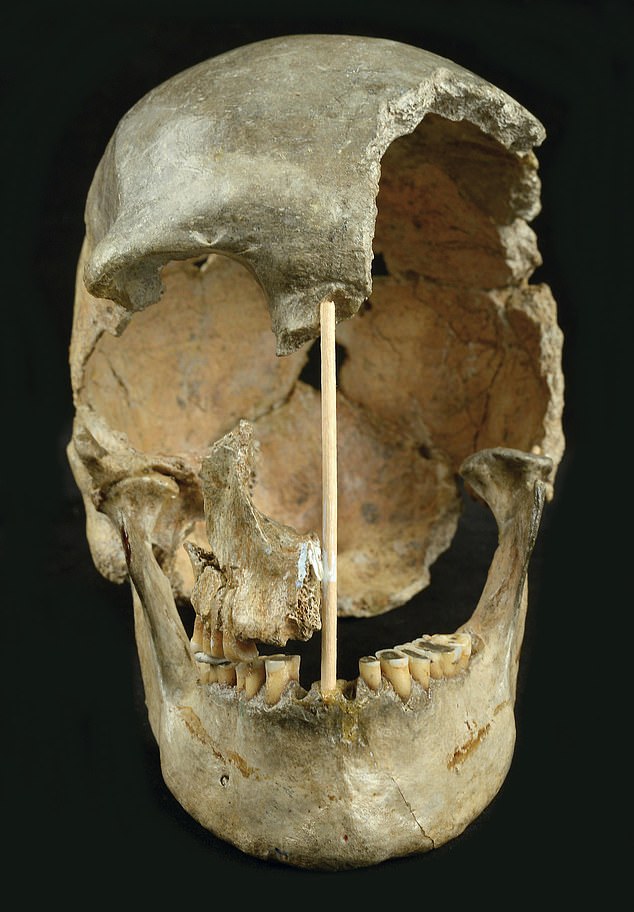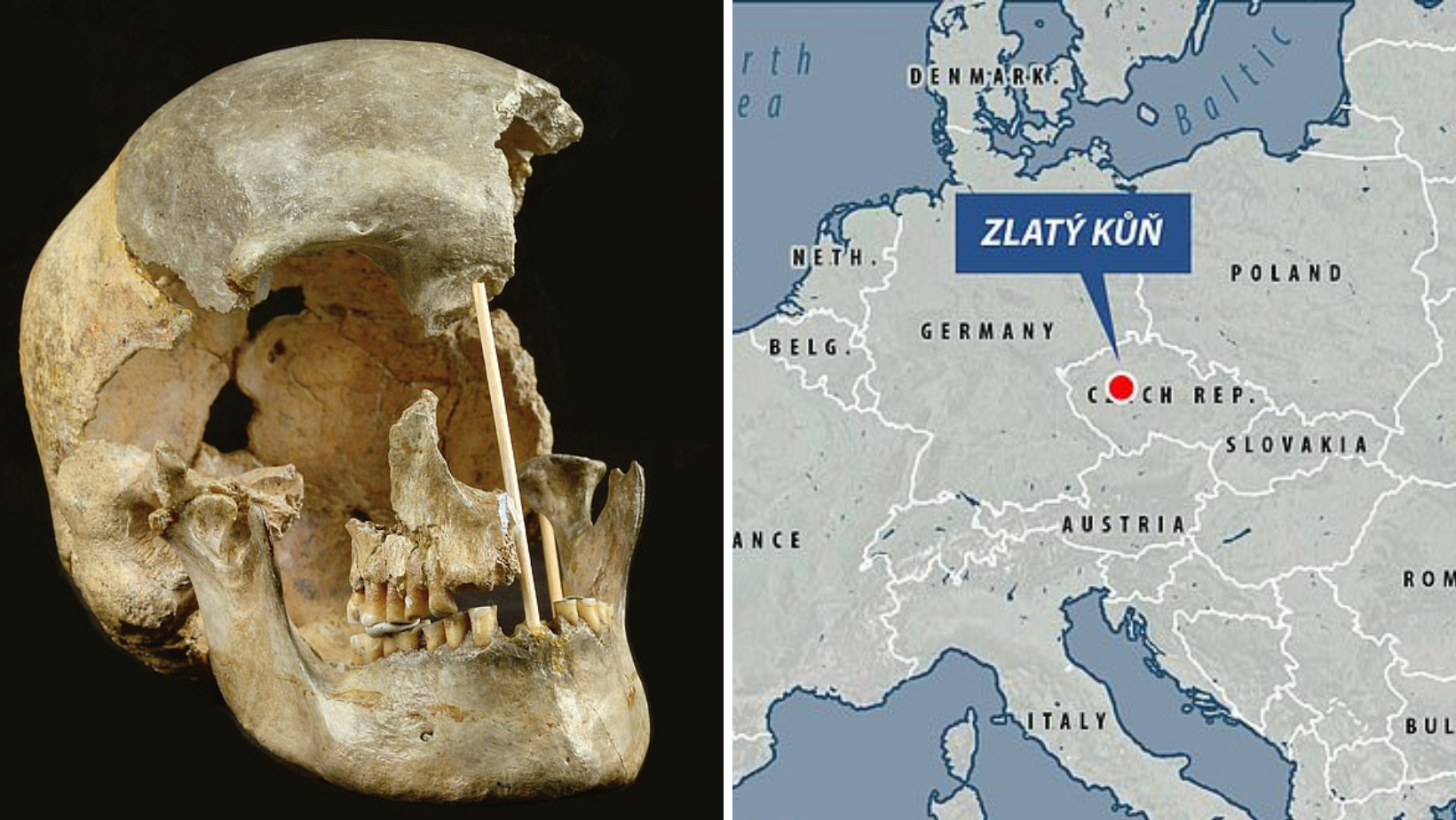The oldest DNA ever found in human remains belongs to a woman who lived in Czechia more than 45,000 years ago, a study has found.
Analysis of her skull reveals she was among the first batch of Homo sapiens to live in Eurasia after our species migrated out of Africa.
It is believed the woman, dubbed Zlatý kůň, may have had Neanderthal ancestors as little as six or fewer generations in her past.
The finding reinforces that humans mated with Neanderthals shortly after we first reached Europe between 50,000 and 45,000 years ago.
This mating event saw humans absorb some Neanderthal genes which survive in all modern people except Africans.
Neanderthals would go extinct shortly afterwards, with some researchers saying competition with Homo sapiens and a changing climate was to blame.

Researchers from the Max Planck Institute for the Science of Human History in Germany tried to date the skeletal remains using radiocarbon isotopes, the traditional and widely-used method for figuring out when a fossil lived.
However, contamination of the remains made this impossible.
But Neanderthal DNA can be used as a proxy for dating because the length of its segments in the genetic code decreases steadily over generations.
The researchers found in their study, published in Nature Ecology and Evolution, that Zlatý kůň has long strips of uninterrupted Neanderthal DNA scattered throughout her genome, indicating she lived not long after humans mated with Neanderthals.
The previously oldest modern human genome came from another old bone, called Ust’-Ishim, from Siberia, which had long stretches of Neanderthal DNA that dated him at 45,000 years old in 2008.
But Zlatý kůň had even more Neanderthal DNA than him. This could mean she was slightly older, the authors suggest in their new paper, published in Nature Ecology & Evolution, and lived before present-day European and Asian populations split.
‘The results of our DNA analysis show that Zlatý kůň lived closer in time to the admixture event with Neanderthals,’ says Kay Prüfer, co-lead author of the study.
In fact, the team estimate that Zlatý kůň lived just 2,000 years after the first interspecies trysts between humans and Neanderthals.

Professor Chris Stringer, research leader in Human Evolution at the Natural history Museum who was not involved in the research, said: ‘The Zlatý kůň partial skull and skeleton were discovered in 1950, and thought to be only about 15,000 years old.
‘New analyses of the woman’s skull have radiocarbon dated it to about 34,000 years old, but genomic data suggests it is at last 10,000 years older than that, and may represent one of the oldest modern humans known from Eurasia so far.’
-
NEWSLETTER
Subscribe for our daily news









